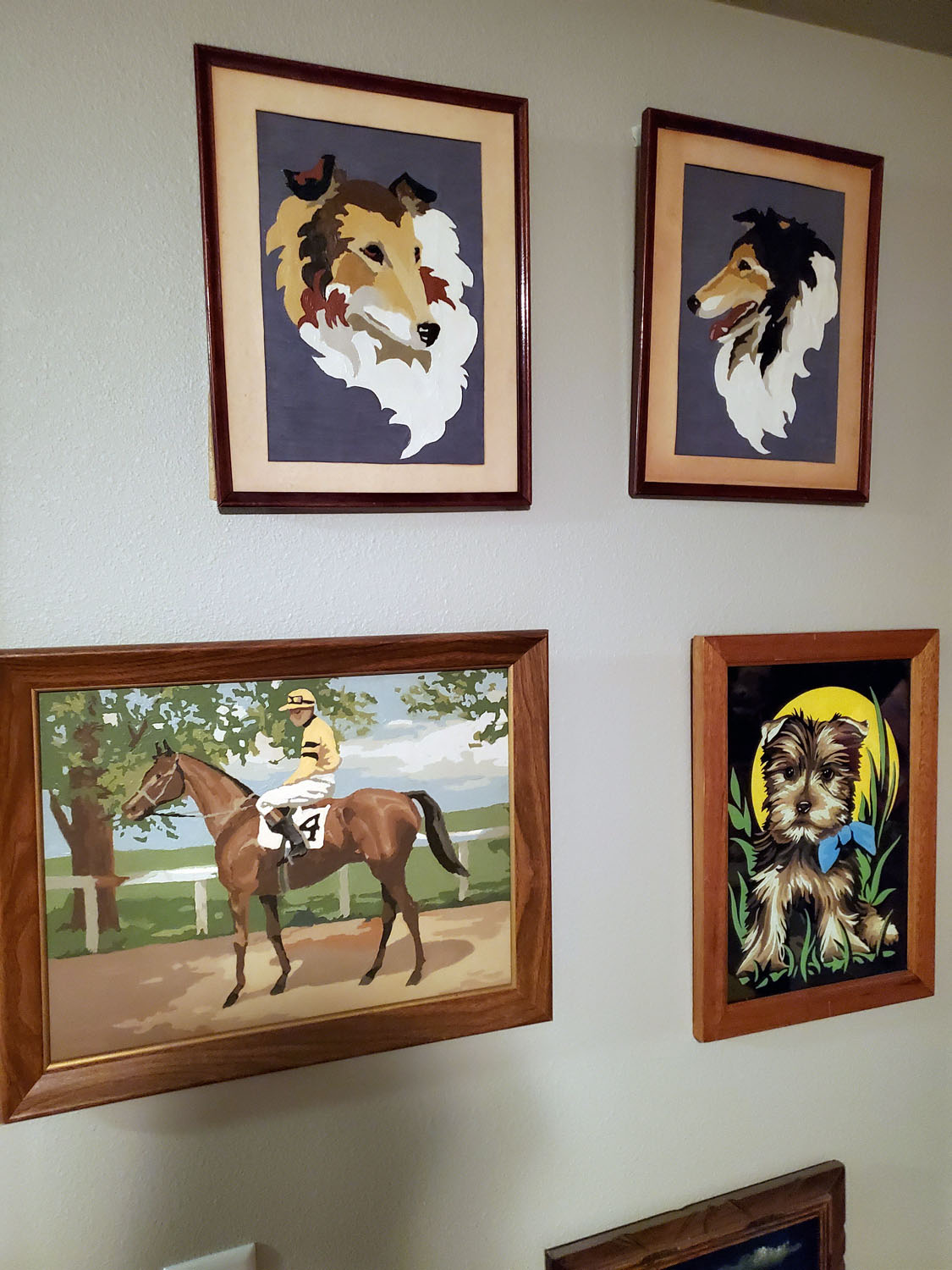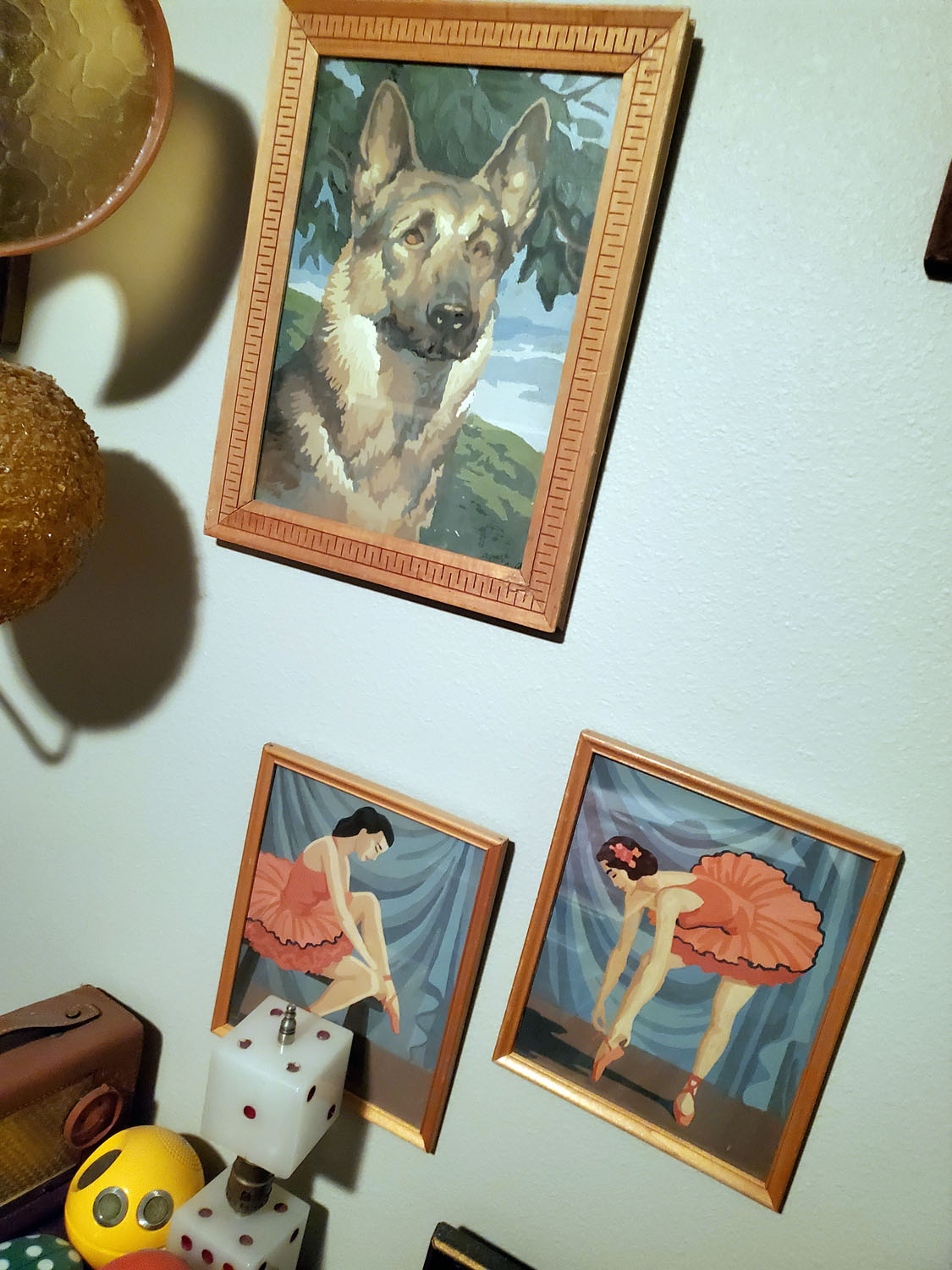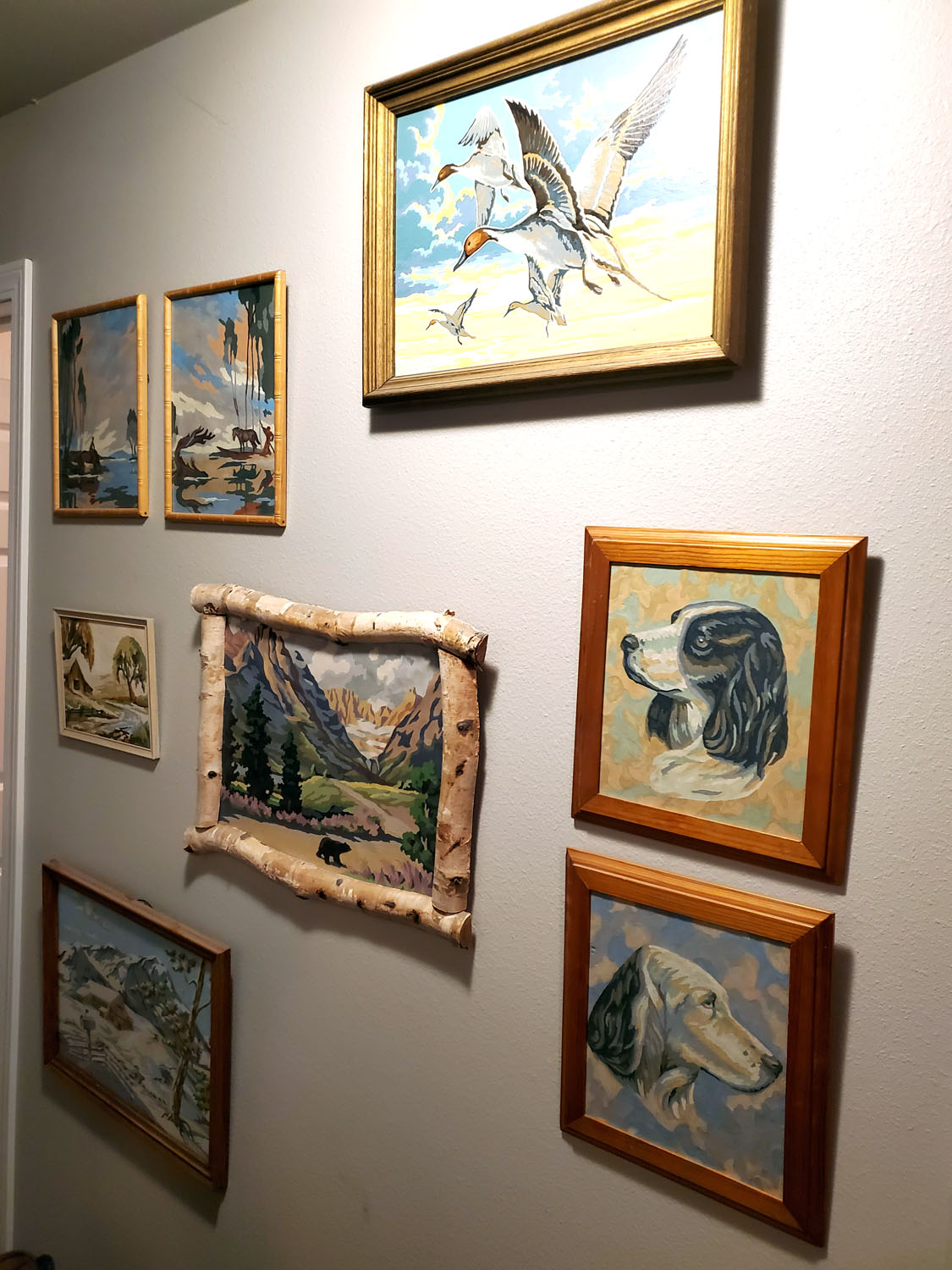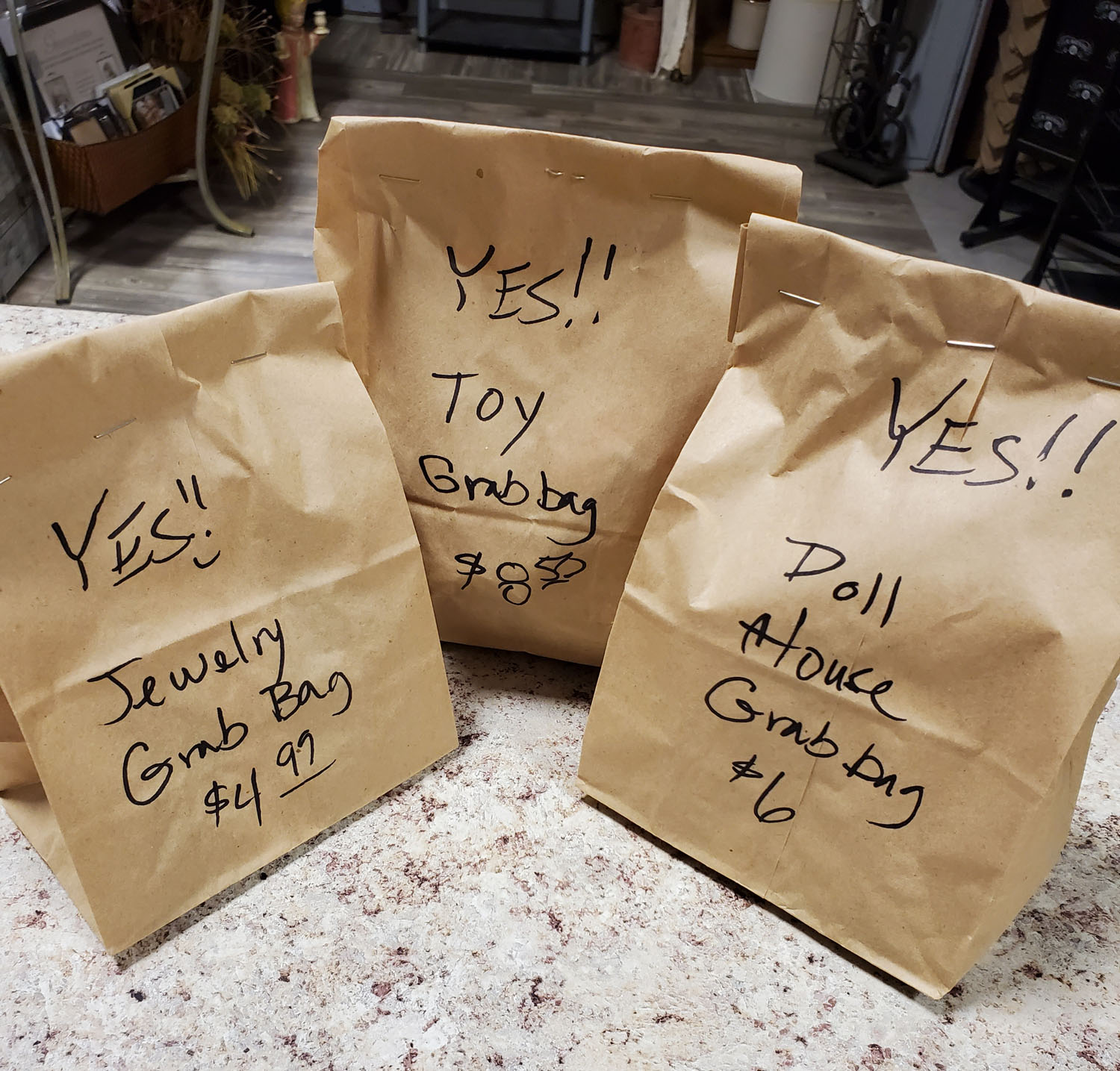Hi, I’m Deanna Dahlsad of Fair Oaks Antiques, here with This Week’s Story, and I am a paint by number collector. (If you’d prefer, you can listen to the podcast here.)



Many mock paint by number paintings, saying the works are kitsch – meaning they are of poor taste. Even those who love kitsch in an ironic or humorous way may discount paint by numbers by saying they are not art, they are conformism. But knowledgeable collectors of PBNs, like myself, know that these works are important cultural icons – and anything but conformism.
The mere popularity of paint by numbers is a very American thing. Inspired by childhood memories of coloring and the art history lesson of Michelangelo assigning his students to paint pre-numbered sections of his famous Sistine Chapel, paint by numbers hold significant places in both mass merchandising commerce and the freedom of anti-establishism.
The matter of paint by number paintings being art — or, rather, not being art — wasn’t really an issue in the 50′s. Recreation specialists & home economists had begun to speak of hobbies as more than a way to beat the unemployed Depression-era-nothing-to-do-blues, more than a way to improve morale, but as “the fifth freedom,” along with freedom of speech and worship and freedom from want and fear. The prevailing wisdom of the postwar period was that creative hobbies enhanced life and made it worth living, prompting popular celebrities like Frank Sinatra & Dinah Shore to paint as a pastime. With “Sunday painters” like President Eisenhower and Winston Churchill, even the military had adopted this mindset, setting up hobby craft shops in the Pacific Theater and opening the first hobby craft shop at the Alameda Naval Air Station in California.
In 1952, an amateur painter in San Francisco entered and won third place at an art competition with one of Craft Master’s kits. Both the press and the public had a field day noting how judges could not tell the difference between a paint by number work and Modern Art — an art style in its hey-day, but one many people at the time were confused by &/or fed up with.
This was the tipping point for paint by numbers. They became so popular that The White House even hung paint-by-number paintings by J. Edgar Hoover, Nelson Rockefeller and others in a West Wing corridor along with other artists’ original works.
Karal Ann Marling, Professor of Art History and American Studies at the University of Minnesota, has written several books about the sensibilities of the 1950s. In her book, As Seen on TV: The Visual Culture of Everyday Life in the 1950s, Marling paints the PBN trend as an outgrowth of World War II hobby-ism rather than a sign of conformity:
National surveys taken in the 1930s, when the Depression curtailed spending on equipment and travel, disclosed a sedentary pattern of recreation: respondents were reading magazines and listening to the radio and visiting with friends. What they really wanted to do, however, was to play tennis and golf, plant a garden, go swimming or skating. In the 1940s, wish became reality. Between 1947 and 1953, revenues for spectator sports and amusements showed a marked dip, despite increases in population and income and the insatiable demand for TV sets. …Market research proved that it was the heaviest TV-watchers who were liable to be most interested in painting a still life or reupholstering the living room sofa. Power tools and other do-it-yourself accessories were a $12 billion industry by the end of the decade; $30 million more went for amateur art supplies. “There seems to be a major trend away from passive, crowd amusements toward active pursuits that people can carry on independently,” concluded a highly regarded study of this “Changed America” with plenty of time on its hands.
More than other pastimes which grew during this time, the do-it-yourself spirit was also a way for man, woman, and child to find his or her way in this new world. It was non-conformist:
Do-it-yourselfism, in particular, was the last refuge for the exercise of control and competence in a world run by the bosses and the bureaucrats. It was a throwback, a rebuke to a buy-it-in-a-box world of TV dinners and ready-made everything.
As Michael Kimmelman wrote in 1994 is Art View for The New York Times (Painting by Numbers: How Bad Was It?), “Paint-by-numbers enthusiasts and Abstract Expressionists alike were affected by the same 50′s Zeitgeist: the tension between social strictures and personal freedom.”
Painting now could be an enjoyable pastime, a therapeutic outlet; not only reserved for the trained and talented.
However, painting by a kit was a very American idea.
Marling says paint by numbers were, “the most American thing you can imagine in that you package up everything you need in a box instead of going through lengthy instruction in how to paint or how to mix colors. It was a personal experience for the painter.” She continued, “You could almost call it supermarket Freudianism.”
While some object to the stamped boards of sameness which are to be painted according to ordained rules, we PBN collectors know that many did paint outside the lines, adding images, painting over what they didn’t like, or otherwise personalizing their works. And even when folks didn’t, they still produced unique folk art pieces. The kits may have been mass-produced, but individuals created each painted piece.
Many say that the paint by number hey-day is long over. Yet the kits continue to be painted — and continue to be made. Some may say this is primarily the pastime of children, but one needn’t look any further than the adult coloring book phenomenon to see that adults enjoy creative outlets too. It’s obvious in the popularity of shows like NBC’s Making It and entire cable channels dedicated to DIY programming.
Thanks to the current pandemic, crafting has exploded. The Smithsonian, which had an exhibit on paint by numbers in 2001, noted that the lockdowns have resulted in hands-on hobbies gaining traction as relaxing alternatives to screen-heavy activities. Etsy, arguably the world’s largest e-commerce website for craft supplies, handmade items (& vintage), has documented the uptick in the DIY trend. In May of this year, Etsy said that there had been a 346% increase in searches on Etsy for “diy”, a whopping 956% increase in searches for “embroidery kit”. Huge gains in other specific classic crafty hobbies were seen as well.
Clearly, there are shades of what Marling noted in the 1940s & 50s happening right now.
And there are other similarities as well.
The original paint by number kits consisted of rolled canvas (like window shades) and numbered glass jars containing paint – though they were “mystery” pictures, where the painter only discovered what they were painting only by applying the appointed colors.
If this reminds you of today’s trend of mystery boxes, you are not alone.
Loot Crate is often credited with the mystery box phenom, beginning with its subscription box service in 2012. Since then, it has become clear that it’s human nature to delight in surprises – even when they aren’t your own. One needn’t go any further than the huge number of views on YouTube unboxing videos to see the vicarious entertainment value of simply watching someone open to reveal the contents of a mystery box.
A rather jaded Luke Winkie at Vox says the appeal of mystery boxes is based on how much fun it is to unwrap presents. “Essentially, the mystery-box gambit is a clever trick to fool millennials into paying for a year-round Christmas experience.”
But I say the huge popularity of mystery boxes is proof that you shouldn’t underestimate the power of anticipation, of human curiosity, the love of surprise – or, for that matter, the love of having an experience – not just an object.
Crafty types, especially those who love to work with ephemera and found items, have always loved a mystery box – only we’ve known them by their vintage name: Grab Bags.
The act of grabbing a wrapped random item or a bag containing an assortment of miscellaneous items without knowing the contents has always been a thrill. It began when I was a kid – primarily because it was an affordable thrill. It continues today because the serendipity of discovery leads to creative inspiration. The Germans aptly call grab bags Wundertüte – and I think that encapsulates the joy so well.
Like paint by numbers, mystery boxes and grab bags may seem kitschy simple thrills for easily entertained minds – but their popularity exposes so much more about our culture, about what we crave, that I think dismissal of them is rather sad. There’s nothing wrong with a joyful, creative experience, whether we stay in the lines or not.
This has been Deanna Dahlsad sharing This Week’s Story for Fair Oaks Antiques.
We sell online and in the Fargo North Dakota – Moorhead Minnesota area exclusively at Fargo Antiques & Repurposed Market in booths #25-27.

Leave a Reply